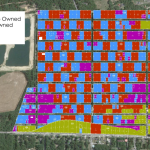WEST ORANGE – Gov. Phil Murphy announced March 8 state school aid funding for his Fiscal Year 2020 budget proposal that provides record levels of support for New Jersey schools.
According to a release, the governor also used the news conference in the West Orange School District to showcase New Jersey’s most recent high school graduation rate, which advanced to 90.9 percent last year – the highest level since states began using a federally mandated methodology to calculate graduation rates in 2011.
“We’ve made a commitment to education, and that is reflected in the historic levels of state aid to schools in our proposed spending plan,” stated Murphy, noting that his proposed budget will increase direct K-12 school aid, or “formula aid,” by $206 million. “When you make that kind of commitment to education, you see the results. The results we celebrate today are the graduation rates, which are improving to even higher levels.”
Budget Plan a ‘Blueprint for Success’
The governor’s proposed budget would provide $15.4 billion to support schools, a record level for New Jersey education funding.
Supporting quality preschool continues to be a key component of the spending plan. Districts that currently receive preschool education aid will see an increase in per-pupil funding, while the preschool programs in 64 communities that expanded this school year will be made permanent. In addition to the $206 million in additional K-12 school aid, the governor proposes a total increase of more than $68 million to support existing preschools and expand new programs.
STEM, technology, and career and technical education also are important elements of Murphy’s budget. His proposal includes $2 million to continue the Computer Science for All initiative, $400,000 to support innovative early college programs, and $1.35 million to continue to provide science education to students through the Liberty Science Center.
“When we prioritize education, we set out a blueprint for educational success,” the governor stated.
The budget proposal also continues the seven-year phase-in to fully fund schools, which began last year and was further solidified with the passage of a law (S2) designed to eliminate years of inequities in funding that saw some school districts being overfunded while aid never kept pace in rapidly growing districts.
Across the state, 368 districts will see increases in aid when compared with last year. In West Orange, schools will see an additional $1.6 million in state aid—a 13 percent increase.
District allocations of state aid are available on the Department of Education’s School Finance webpage.
Graduation Rate Advances
Murphy used his visit to the West Orange School District to spotlight the improved state graduation rate of 90.9 percent for 2018– an all-time high. The rate which has steadily advanced since 2011, when it was 83 percent.
“New Jersey’s school system has long been regarded as among the best in the nation, so it follows that earning a high-school diploma is a crucial step to prepare students for success in life,” stated Murphy. “Success in education goes to the very heart of building a stronger and fairer New Jersey.”
“This continual improvement in our graduation rate translates to a tangible impact on real lives,” sstated Education Commissioner Lamont O. Repollet. “Each year, hundreds upon hundreds of additional young people are earning their high school diploma, which is a passport that offers a greater opportunity for postsecondary success. We applaud the educators who remain steadfast in their commitment to continually increasing the graduation rate for students of all backgrounds.”
“Educators, parents, students, and all stakeholders involved in the education of children should be proud of the improvement we’re seeing in the graduation rate,” stated Arcelio Aponte, president of the State Board of Education. “New Jersey has established rigorous academic standards, and our schools are providing a world-class education that helps students meet that challenge.”
The following is a summary of 2018 graduation rates by subgroups of students:
African-American students graduated at a rate of 84.22 percent in 2018, an increase of more than 15 percentage points from 2011, when it was 69 percent.
84.79 percent of Hispanic students graduated in 2018; in 2011 it was 73 percent.
94.96 percent of white students graduated in 2018, an increase from 90 percent in 2011.
97.14 percent of Asian students graduated last year, an increase from 93 percent in 2011.
Economically disadvantaged students graduated at a rate of 84.6 percent in 2018, an increase from 71 percent in 2011.
75.82 percent of Limited English Proficient (LEP) students graduated in 2018, an increase from 68 percent in 2011.
Students with disabilities graduated at a rate of 80.14 percent last year, an increase from 73 percent in 2011.
New to the department’s 2018 graduation data are rates of subgroups of students by gender, homeless students, and students in foster care.
The graduation rate last year for males was 88.65 percent and for females it was 93.28 percent. The graduation rate for students in foster care was 62.61 percent and for homeless students it was 72.61 perce
New Jersey has consistently held among the highest graduation rates in the nation; in 2017, New Jersey’s rate of 90.5 percent was second only to Iowa’s rate of 91.0 percent.
The graduation rate is defined as the cohort of ninth-graders who graduate four years later. The department also calculates the five-year graduation rate. The 2018 graduation rate for students who graduated within five years was 92.4 percent, an increase from 91.8 percent in the previous year.
Additional information and district-by-district graduation rates can be found on the department’s Graduation Rates webpage.
Dennis Township – Warning… Stock up on toilet paper! A 25 % tariff on Canada (day one) will raise the price of toilet paper on January 20th. We may get our eggs from local farms, but we WILL pay more for necessities…








